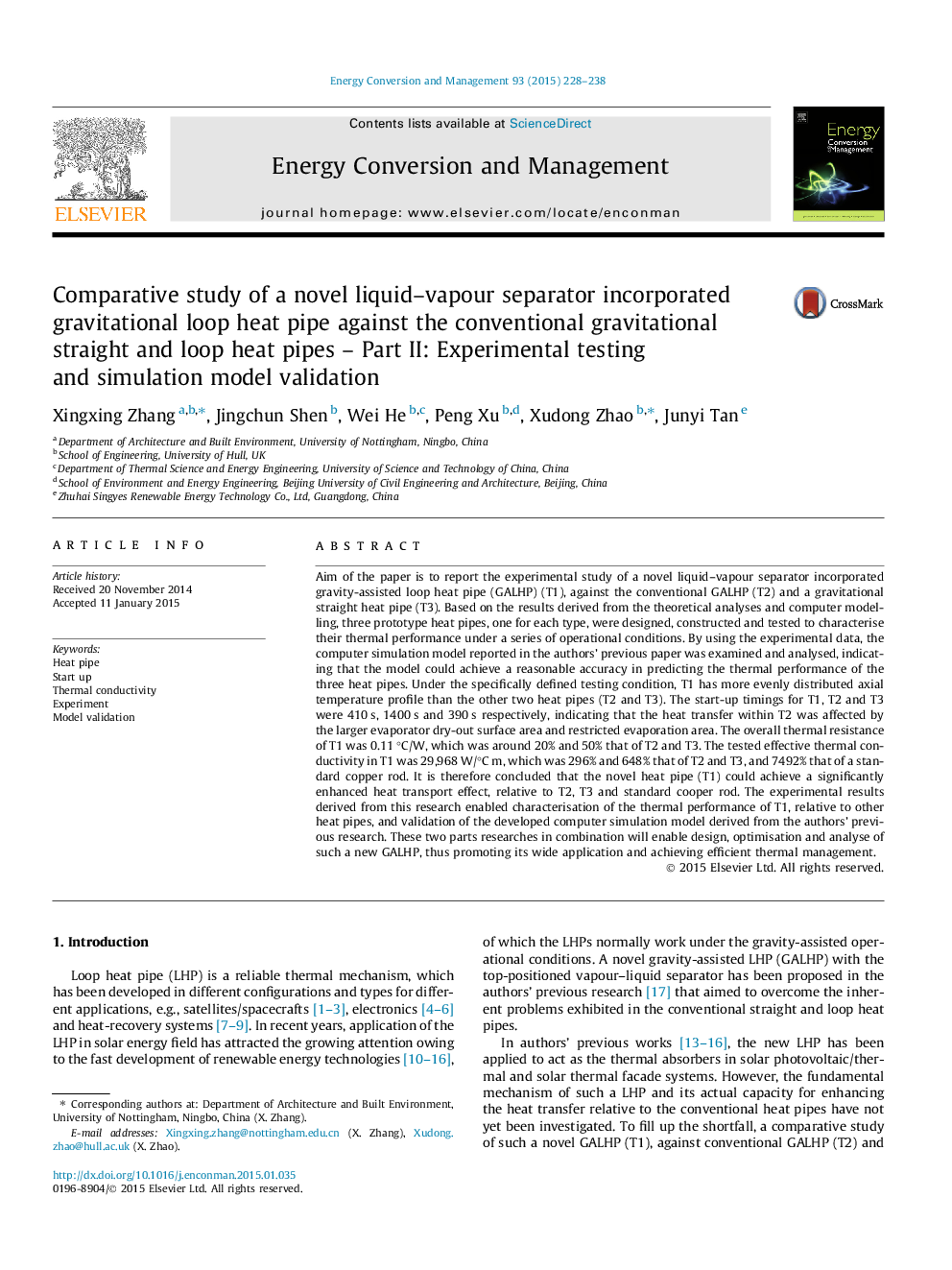| Article ID | Journal | Published Year | Pages | File Type |
|---|---|---|---|---|
| 7162947 | Energy Conversion and Management | 2015 | 11 Pages |
Abstract
Aim of the paper is to report the experimental study of a novel liquid-vapour separator incorporated gravity-assisted loop heat pipe (GALHP) (T1), against the conventional GALHP (T2) and a gravitational straight heat pipe (T3). Based on the results derived from the theoretical analyses and computer modelling, three prototype heat pipes, one for each type, were designed, constructed and tested to characterise their thermal performance under a series of operational conditions. By using the experimental data, the computer simulation model reported in the authors' previous paper was examined and analysed, indicating that the model could achieve a reasonable accuracy in predicting the thermal performance of the three heat pipes. Under the specifically defined testing condition, T1 has more evenly distributed axial temperature profile than the other two heat pipes (T2 and T3). The start-up timings for T1, T2 and T3 were 410 s, 1400 s and 390 s respectively, indicating that the heat transfer within T2 was affected by the larger evaporator dry-out surface area and restricted evaporation area. The overall thermal resistance of T1 was 0.11 °C/W, which was around 20% and 50% that of T2 and T3. The tested effective thermal conductivity in T1 was 29,968 W/°C m, which was 296% and 648% that of T2 and T3, and 7492% that of a standard copper rod. It is therefore concluded that the novel heat pipe (T1) could achieve a significantly enhanced heat transport effect, relative to T2, T3 and standard cooper rod. The experimental results derived from this research enabled characterisation of the thermal performance of T1, relative to other heat pipes, and validation of the developed computer simulation model derived from the authors' previous research. These two parts researches in combination will enable design, optimisation and analyse of such a new GALHP, thus promoting its wide application and achieving efficient thermal management.
Related Topics
Physical Sciences and Engineering
Energy
Energy (General)
Authors
Xingxing Zhang, Jingchun Shen, Wei He, Peng Xu, Xudong Zhao, Junyi Tan,
